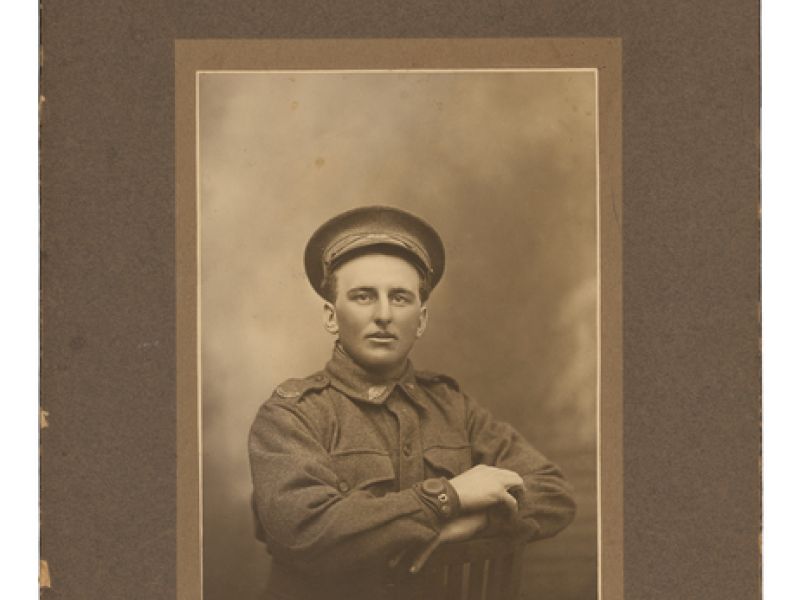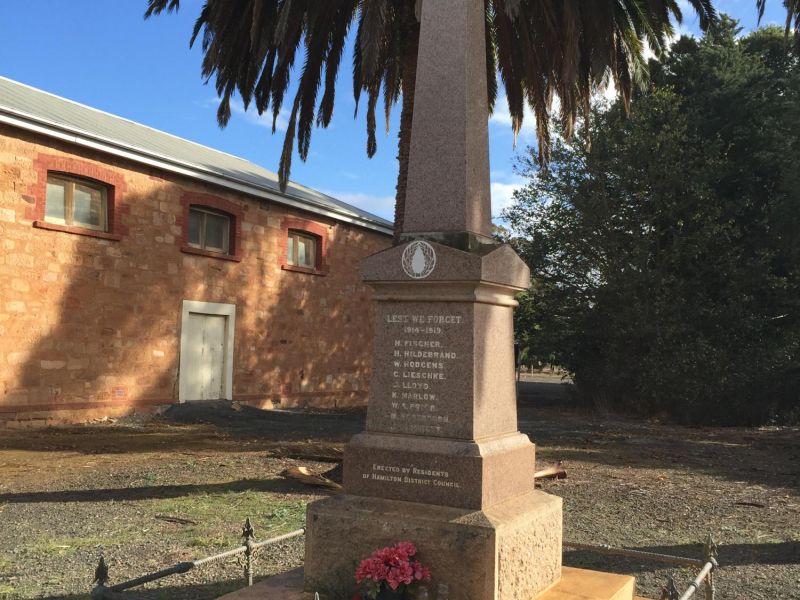Private William Vincent Hodgens, 50th Battalion, AIF
William Hodgens, known as “Will”, was born on 19 April 1892, the third son of Mary and James Hodgens of Tothill Creek in South Australia. He was educated at the local school and went on to work as a farmer’s labourer in the district. He was a keen sportsman, and would try his hand at playing anything. He and his family were members of St Agnes’ Catholic Church in nearby Marrabel, and it was recorded that he “was always very attentive to his religious duties” and a “staunch support of the church.”
Will Hodgens enlisted in the Australian Imperial Force in March 1916. He underwent a period of training in Australia before leaving six weeks later for active service overseas with reinforcements to the 50th Battalion. Private Hodgens first went to Egypt for further training, arriving in France to fight on the Western Front in mid-1916.
The 50th Battalion was heavily involved in the second phase of fighting around the French village of Pozieres and nearby Mouquet Farm in August 1916. Although his battalion suffered heavy casualties under some of the heaviest artillery fire of the war, Hodgens came through unscathed.
Later in the year, after a period in a relatively quiet sector, the 50th Battalion returned to the Somme. On 17 November 1917, after several days in the front line, Will Hodgens’ position was struck by artillery fire. Hodgens and another man were severely wounded, and Hodgens suffered part of his jaw blown away, fractures to both his legs, and severe lacerations to a shoulder. The other man was worse, however, and Hodgens took it upon himself to go and get help. He had to crawl about 200 metres to get attention, which took him over an hour, and once the stretcher bearers arrived he refused any assistance until his mate had been treated first.
Hodgens was eventually evacuated from the battlefield and sent through a series of casualty clearing stations and treatment centres to hospital in Birmingham, England. By the time he arrived his wounds were seriously septic. By early December there was little choice but to operate to try to stop haemorrhages in his facial wounds. Private Will Hodgens, seriously weakened from his septic wounds, died under anaesthetic on the 9th of December 1916.
William Hodgens was buried in the nearby Birmingham Cemetery at Lodge Hill, where he lies today under a stone with no epitaph. He was 24 years old.
- AWM Roll of Honour https://www.awm.gov.au/collection/R1635342

 Australian War Memorial
Australian War Memorial